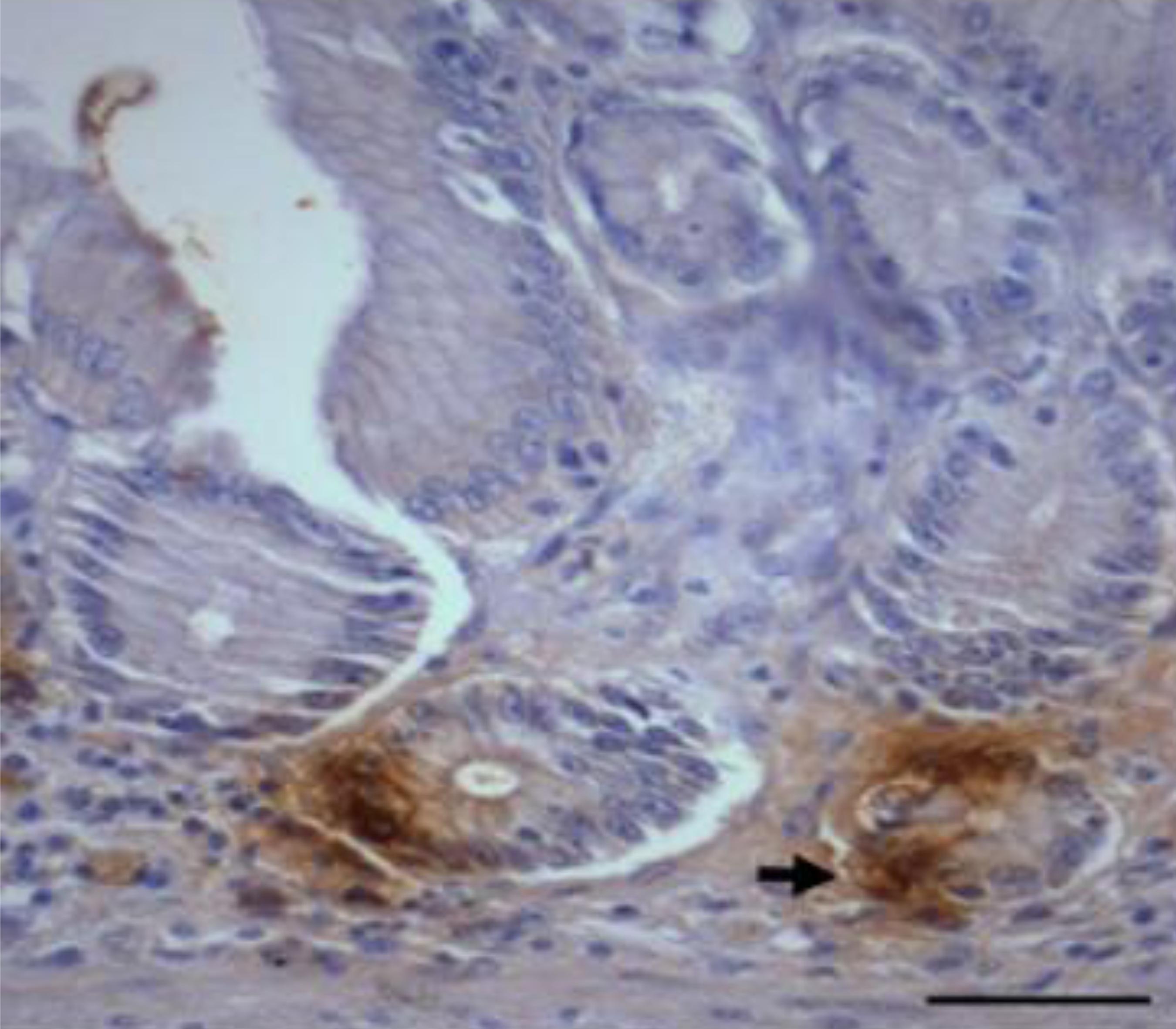Abstract:
The scorpion mud turtle (Kinosternon scorpioides) is a small chelonian, typical of the floodplains of the Amazon. This species is an important source of food and income and it has being studied because of its vulnerability to indiscriminate hunting, deforestation and burning; for this reason, it has been researched in order to supply data for the preservation of the species. The immunohistochemistry activity of endocrine cells present in the stomach of scorpion mud turtle is not totally known. Therefore, the aim of this work was to identify the presence of enteroglucagon hormone and to classify the endocrine cells in the stomach of the scorpion mud turtle. The fragments were submitted to Hematoxylin-Eosin technique and streptavidin peroxidase for staining and detection of antigen, respectively. Immunoreactivity to enteroglucagon in cells was found on the three portions of the stomach (gastric, fundica and pyloric); however, the immunoreactivity was more evident in the first two regions than in the last one. Endocrine cells of stomach were classified as argyrophil and argentaffin and were found among cells that comprise the gastric glands and were classified as "open type" and "closed type". There is no difference between the biochemistry and immunohistochemistry of enteroglucagon K. scorpioides and other animal species.
Keywords
endocrine cells; immunohistochemistry; Kinosternon; turtle



